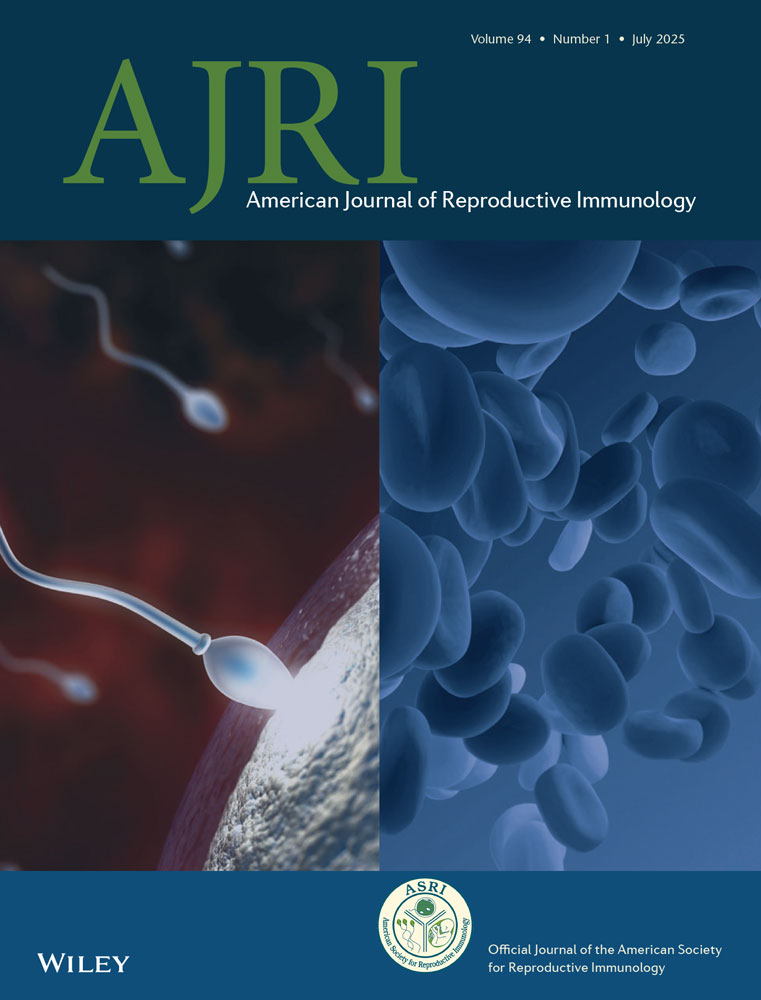Salvianolic Acid B Promotes Placental and Decidual Angiogenesis by Restoring the Normal Expression of Hypoxia-Inducible Factor-1α/Vascular Endothelial Growth Factor in Mice With Recurrent Pregnancy Loss
Fangfang Hu, Chao Yang, and Lujun Dai contributed equally to this study.
Funding: This work was supported by the National Natural Science Foundation of China presided over by Guanyou Huang and Shuyun Zhao (http://www.nsfc.gov.cn/ Grants 82260312 and 82460307) and the Program of Guizhou Medical University for applying National Natural Science Foundation presided over by Guanyou Huang (Grant 20NSP049).
ABSTRACT
Introduction
Accumulating evidence suggests the association between abnormal angiogenesis at the maternal–fetal interface and recurrent pregnancy loss (RPL); nonetheless, the mechanism remains largely unknown. Previous studies have reported the clinical effect of the traditional Chinese medicine Danshen in the treatment of RPL. This study aimed to investigate whether salvianolic acid B (SalB), the primary water-soluble component of Danshen, could reduce the embryonic absorption rate (EAR) by increasing placental and decidual angiogenesis in RPL mice and to explore the possible mechanism.
Methods
The decidual and chorionic tissues were collected from normal pregnancies and unknown recurrent pregnancy loss (URPL) patients. Western blotting was used to determine the expression of vascular endothelial growth factor (VEGF) and hypoxia-inducible factor-1α (HIF-1α) in the tissues. Different doses of SalB and/or the VEGF inhibitor PTC299 were intragastrically administered to normal and RPL pregnant mice daily at 0.5 day of pregnancy for 10 days. The EAR, mean placental weight (MPW), and micro vessel density (MVD) were determined in placental and decidual tissues, and the number of live pups per litter was counted. The expression of VEGF and HIF-1α in the tissues was evaluated using western blotting and immunohistochemistry.
Results
The VEGF protein levels in decidual and chorionic tissues were significantly lower, and HIF-1α levels were significantly higher than that of normal pregnancies. The EAR was significantly higher, MVD, MPW, and protein levels of VEGF in the placental and decidual tissues of RPL mice were significantly lower than those in normal mice. In contrast, the protein levels of HIF-1α were significantly higher in RPL mice than in normal mice. SalB restored the morphological changes in the uterus of RPL mice, as well as the number of blood vessels in the placenta and decidua, and ameliorated adverse embryonic development in mice (such as neural tube defects and reduced crown-rump length), thereby increasing the pups per. Additionally, SalB increased the VEGF/VEGFR2/p-VEGFR2 levels, placental and decidual MVD, and MPW and decreased the HIF-1α levels and EAR in a dose-dependent manner. A positive association of daily SalB dose (0–100 mg/kg) with the VEGF levels, placental and decidual MVD and MPW, and a negative association of daily SalB dose with the HIF-1α levels and EAR were observed.PTC299 reversed the aforementioned increases and decreases in the daily SalB intake of RPL mice. Among these, the daily dose of 100 mg/kg of SalB was deemed optimal, and a daily dose of SalB exceeding 100 mg/kg did not entirely induce these changes. No correlation between HIF-1α and VEGF was observed in decidual and placental/ chorionic tissues from normal pregnancies and URPL patients, and from normal and RPL mice, but a negative correlation between the two factors was observed in the tissues from RPL mice in the presence of SalB with or without PTC299.
Conclusions
SalB ameliorates RPL by restoring physiological HIF-1α/VEGF balance and placental angiogenesis. Optimal daily dose was 100 mg/kg, which demonstrated the absence of embryotoxicity or mitigated the embryotoxicity of RPL mice, while higher doses (400 mg/kg) showed lesser improvement and increased hepatotoxicity. The promotion of placental and decidual angiogenesis may be an effective strategy for treating unexplained RPL.
Conflicts of Interest
The authors declare no conflicts of interest.
Open Research
Data Availability Statement
The data that support the findings of this study are available on request from the corresponding author. The data are not publicly available due to privacy or ethical restrictions.




